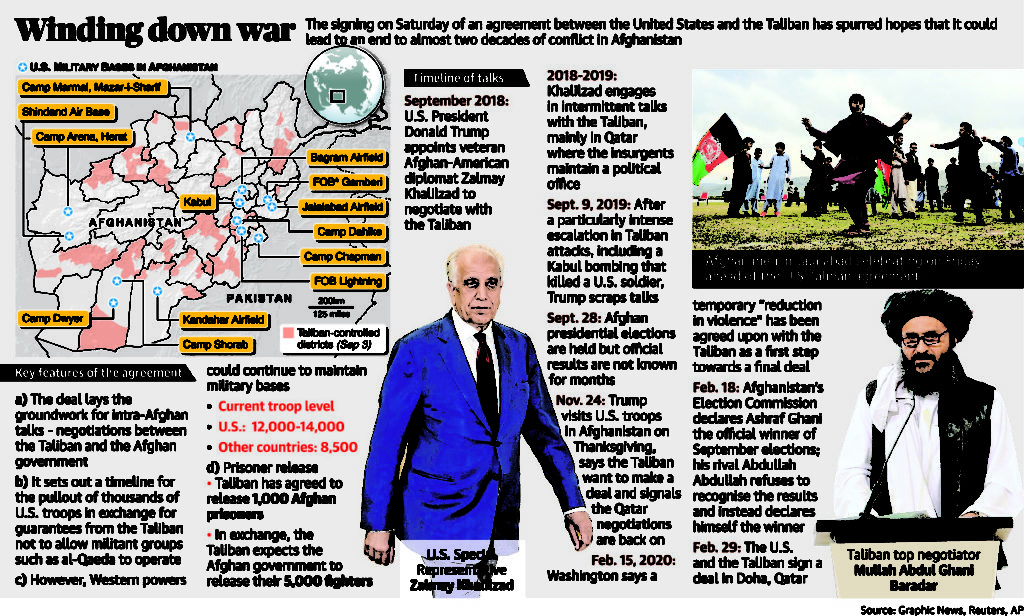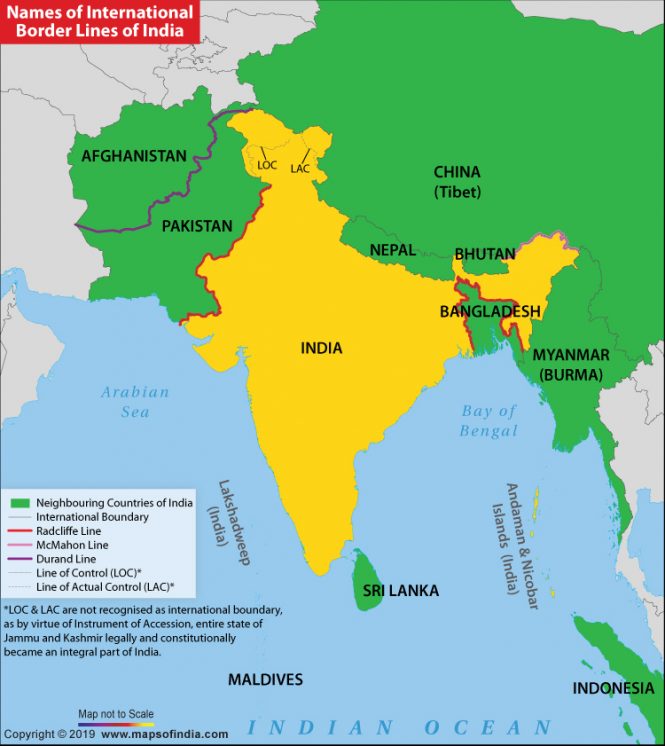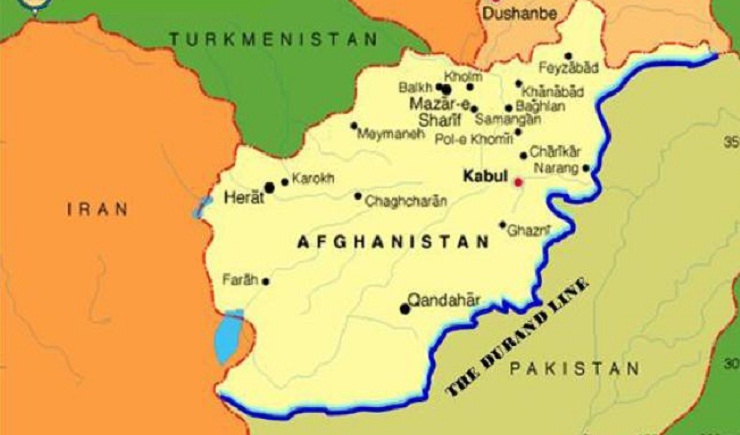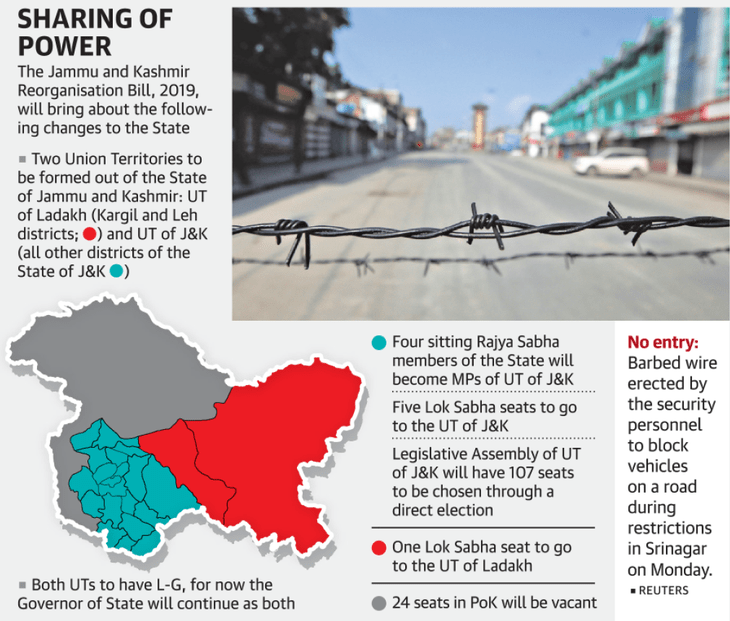Contents
- U.S. strikes a deal with Taliban to end 18-year-long Afghan war
- No NSG waiver for India, says New Zealand Deputy PM
- All benefits reaching right persons: PM
- J&K uses 2011 data for delimitation
- Govt.’s total receipts at Rupees 12.82 lakh cr. in April-January
- NCBS method to detect virus associated with a rare skin cancer
- Shanghai lab that first sequenced coronavirus genome shut down
- Health outcomes of displaying art in hospitals
U.S. STRIKES A DEAL WITH TALIBAN TO END 18-YEAR-LONG AFGHAN WAR
Focus: GS-II International relations
Why in news?
- The U.S. signed a deal with the Taliban on 29th February 2020 that could pave way for a full withdrawal of foreign soldiers from Afghanistan over the next 14 months.
- This represents a step towards ending the 18-year-war in the nation.
- Taliban leader calls it ‘day of victory’; Pompeo says victory will be achieved only when Afghans prosper
- India welcomes the agreement.

Details
- The deal was signed in the Qatari capital Doha.
- India attended the landmark event of the long-sought peace deal as an “observer”.
- The United States said it is committed to reducing the number of its troops to 8,600 from the current 13,000 within 135 days of signing the deal.
- It also said it is working with allies to proportionally reduce the number of coalition forces in Afghanistan, if the Taliban were to adhere to its commitments.
- A full withdrawal of all foreign forces would occur within 14 months of the deal getting signed if the Taliban holds up its end of the deal.
- The agreement is expected to lead to a dialogue between the Taliban and the Kabul government that, if successful, could ultimately see an end to the grinding 18- year conflict.
- For U.S President Donald Trump, the Doha deal represents a chance to make good on his promise to bring U.S. troops home.
- The accord also comes amid a fragile political situation in Afghanistan.
Relation Between India and Afghanistan

- Relations between the people of Afghanistan and India traces to the Indus Valley Civilisation.
- Between the 10th century to the mid-18th century, northern India has been invaded by a number of invaders based in what today is Afghanistan. Among them were the Ghaznavids, Ghurids, Khaljis, Suris, Mughals and Durranis.
- India shares border with Pakistan and there is the Durand Line conflict between Pakistan and Afghanistan.
- The Republic of India was the only South Asian country to recognize the Soviet-backed Democratic Republic of Afghanistan in the 1980s, though relations were diminished during the 1990s Afghan civil war and the Taliban government.
- The Turkmenistan–Afghanistan–Pakistan–India Pipeline (TAPI), also known as Trans-Afghanistan Pipeline, is a natural gas pipeline being developed by the Galkynysh – TAPI Pipeline Company Limited. The pipeline will transport natural gas from the Galkynysh Gas Field in Turkmenistan through Afghanistan into Pakistan and then to India.
What is Durand Line?

- The Durand Line is an international 2,430-kilometre border between Afghanistan and Pakistan.
- It was originally established in 1893 as the international border between British India and Afghanistan by Mortimer Durand, a British diplomat of the Indian Civil Service, and Abdur Rahman Khan, the Afghan Emir.
- The Purpose was to fix the limit of their respective spheres of influence and improve diplomatic relations and trade.
- Although the Durand Line is internationally recognized as the western border of Pakistan, it remains largely unrecognized by Afghanistan.
NO NSG WAIVER FOR INDIA, SAYS NEW ZEALAND DEPUTY PM
Focus: GS-II International relations
Why in news?
New Zealand wants defined norms for entry of non-NPT states into NSG said New Zealand Deputy Prime Minister Winston Peters during his visit to Delhi in the last week of February 2020.
Details of the visit
- This visit was regarding bilateral trade and multilateral cooperation in the Indo-Pacific.
- New Zealand had Blocked India’s entry as a member of the Nuclear Suppliers Group (NSG) along with China and others in 2016, and The Deputy Prime Minister confirmed that New Zealand’s stand had not changed.
- New Zealand continued to ask the NSG to develop “fixed norms and criteria” for all non-signatories to the Non Proliferation Treaty.
India – New Zealand relations
- India and New Zealand have cordial and friendly relations rooted in the linkages
- of Commonwealth (Both the countries were a part of the British Empire) and parliamentary democracy.
- There are approximately 1,75,000 people of Indian descent in New Zealand –
- Both countries have been a part of the East Asian Summit -The East Asia Summit (EAS) is a regional forum held annually by leaders of, initially, 16 countries in the East Asian, Southeast Asian, and South Asian regions, based on the ASEAN Plus Six mechanism. Membership expanded to 18 countries including Russia and the United States at the Sixth EAS in 2011.
What is Nuclear Suppliers Group (NSG)?
- The Nuclear Suppliers Group (NSG) is a multilateral export control regime and a group of nuclear supplier countries that seek to prevent nuclear proliferation by controlling the export of materials, equipment and technology that can be used to manufacture nuclear weapons.
- The NSG was founded in response to the Indian nuclear test in May 1974.
- The test demonstrated that certain non-weapons specific nuclear technology could be readily turned to weapons development.
- Nations already signatories of the Nuclear Non-Proliferation Treaty (NPT) saw the need to further limit the export of nuclear equipment, materials or technology.
Non-Proliferation Treaty
- The Treaty on the Non-Proliferation of Nuclear Weapons, commonly known as the Non-Proliferation Treaty or NPT, is an international treaty whose objective is to prevent the spread of nuclear weapons and weapons technology, to promote cooperation in the peaceful uses of nuclear energy, and to further the goal of achieving nuclear disarmament and general and complete disarmament
- The NPT is often seen to be based on a central bargain: “the NPT non-nuclear-weapon states agree never to acquire nuclear weapons and the NPT nuclear-weapon states in exchange agree to share the benefits of peaceful nuclear technology and to pursue nuclear disarmament aimed at the ultimate elimination of their nuclear arsenals.”
- The treaty defines nuclear-weapon states as those that have built and tested a nuclear explosive device before 1 January 1967; these are the United States, Russia, the United Kingdom, France, and China.
- Four other states are known or believed to possess nuclear weapons: India, Pakistan, and North Korea have openly tested and declared that they possess nuclear weapons, while Israel is deliberately ambiguous regarding its nuclear weapons status.
- The Treaty has 189 States Parties, which is the largest number of any arms control agreement.
- However, India, Israel and Pakistan have not signed the NPT.
- North Korea announced its withdrawal in 2003, and further announced that it had conducted an underground nuclear explosion in 2006 and 2009.
| Recently NSG was in news. What is/are the main function/s of NSG? 1. Controlling the export of nuclear material, equipment and technology. 2.Transfer of nuclear-related dual-use materials, software and related technology. 3.Each member country must be informed about the supply, import or export of any nuclear-based product. A) Only 1 B) 1 and 2 C) 2 and 3 D) 1, 2 and 3 Ans: D |
ALL BENEFITS REACHING RIGHT PERSONS: PM
Focus: GS-II Welfare Schemes, Prelims
Why in news?
Every penny dispatched from Delhi was reaching its rightful beneficiary said the Prime Minister in Bundelkhand, where he had been to lay the foundation stone for the Bundelkhand Expressway.
Details of the announcement
- Over 50,000 crore had been directly deposited into the bank accounts of around 8.5 crore farmer families in the country under the PM-KISAN scheme in the past year.
- Of this sum – 12,000 crore was deposited in the accounts of 2 crore farmers in U.P. itself.
- The PM Emphasized that this was done without the involvement of any intermediaries, without any recommendation or discrimination or bribes.
- In Chitrakoot, Mr. Modi launched 10,000 farmers producers’ organizations all over the country. A Farmer Producer Organisation (FPO) is a legal entity formed by primary producers, i.e., farmers. A PO can be a producer company, a cooperative society or any other legal form which provides for sharing of profits/benefits among the members.
Benefits of the Bundelkhand Expressway
- The expressway would alter lives in Bundelkhand, creating thousands of employment opportunities
- It would Link the region to big cities.
- It would “speed up” the Defence Corridor that is coming up in the region.
- Bundelkhand would be known for making India self-reliant in the manufacture of arms and ammunition.
About PM- KISAN
- Pradhan Mantri Kisan Samman Nidhi is a central sector scheme under the government of India which provides income support to the farmers and their families.
- PM-KISAN scheme was launched on 24 February 2019.
- Under this scheme, all small and marginal farmers will be provided with income support of Rs.6,000 per year in three instalments which will be deposited directly to their bank accounts.
- It is a Central Sector scheme with 100% funding from Government of India.
- It is under Ministry of Agriculture and Farmers Welfare.
The main objectives of PM-KISAN scheme are:
- To provide income support to all eligible land-holding farmers and their families.
- PM-KISAN scheme also aims to supplement the financial needs of the farmers in procuring various inputs to ensure proper crop health and appropriate yields, commensurate with the anticipated farm income.
- The scheme is expected to increase the coverage of PM-KISAN to around 14.5 crore beneficiaries. It aims to cover around 2 crores more farmers with an estimated expenditure of Rs. 87,217.50 crores that will be funded by the Central Government for the year 2019-20.
Some of the categories of beneficiaries who are NOT eligible for benefit under this scheme are:
- Any institutional land-holders.
- The farmer as well as any
member of the family belonging to the following categories:
- Former and present holders of constitutional posts
- Former and present Ministers/ State Ministers
- Former or present members of LokSabha/ RajyaSabha/ State Legislative Assemblies/ State Legislative Councils
- Former and present Mayors of Municipal Corporations
- Former and present Chairpersons of District Panchayats.
- Any serving or retired officers as well as employees under the Central/ State Government Ministries /Offices/Departments.
- All retired pensioners who get a monthly pension of Rs.10,000/-or more and belonging to the above category.
- Any individual who paid their income tax in the last assessment year is not eligible under this scheme.
- Professionals like Doctors, Engineers, Lawyers, Chartered Accountants, and Architects registered with Professional bodies and carrying out profession by undertaking practices.
J&K USES 2011 DATA FOR DELIMITATION
Focus: GS-II Governance
Why in news?
- The new Union Territory of Jammu and Kashmir ( J&K) will be the only place in the country to undergo a delimitation exercise based on the population figures recorded in the 2011 census.
- Delimitation was last done in J&K in 1995.
- The latest readjustment of boundaries of constituencies in the States and other Union Territories has been done on the basis of the 2001 census and in future, it will be carried out based on the 2031 census.
Details
- The unique provision for J&K was enabled through an amendment introduced in the J&K Reorganisation Act, 2019.
- The Act passed by Parliament on August 6 bifurcated the State of J&K into the Union Territories of J&K (with a legislature) and Ladakh (without legislature).
- The J&K Assembly was dissolved in November 2018 and the region has been under Central rule since June 2018.
- Section 63 was introduced in the J&K Reorganisation Act so that the delimitation exercise can be conducted smoothly without overlapping with other provisions of the Delimitation Commission Act, 2002.
- The provision did not require any separate legislation as it was incorporated in the primary Act.
- The full Delimitation Commission is yet to be appointed.
- The delimitation will be done for 90 seats as 24 seats fall in Pakistan-occupied Kashmir (PoK).
- The exercise will take at least a year to complete. Till then, no Elections can be held
Jammu & Kashmir Reorganisation Act, 2019

- The Jammu and Kashmir Reorganisation Bill, 2019 was introduced in Rajya Sabha on August 5, 2019 by the Minister of Home Affairs, Mr. Amit Shah.
- The Bill provides for reorganisation of the state of Jammu and Kashmir into the Union Territory of Jammu and Kashmir and Union Territory of Ladakh.
- The Bill reorganises the state of Jammu and Kashmir into: (i) the Union Territory of Jammu and Kashmir with a legislature, and (ii) the Union Territory of Ladakh without a legislature.
- The Union Territory of Ladakh will comprise Kargil and Leh districts, and the Union Territory of Jammu and Kashmir will comprise the remaining territories of the existing state of Jammu and Kashmir.
- The Union Territory of Jammu and Kashmir will be administered by the President, through an administrator appointed by him known as the Lieutenant Governor.
- The Union Territory of Ladakh will be administered by the President, through a Lieutenant Governor appointed by him.
- The High Court of Jammu and Kashmir will be the common High Court for the Union Territories of Ladakh, and Jammu and Kashmir. Further, the Union Territory of Jammu and Kashmir will have an Advocate General to provide legal advice to the government of the Union Territory.
- The Legislative Council of the state of Jammu and Kashmir will be abolished. Upon dissolution, all Bills pending in the Council will lapse.
Delimitation Commission Act, 2002
- An Act to provide for the
readjustment of:
- The allocation of seats in the House of the People to the States
- The total number of seats in the Legislative Assembly of each State
- The division of each State and each Union territory having a Legislative Assembly into territorial constituencies for elections to the House of the People and Legislative Assemblies of the States and Union territories
- and for matters connected therewith.
- Delimitation literally means the act or process of fixing limits or boundaries of territorial constituencies in a country to represent changes in population.
Delimitation is done in order to:
- Provide equal representation to equal segments of a population.
- Fair division of geographical areas so that one political party doesn’t have an advantage over others in an election.
- Follow the principle of “One Vote One Value”.
The problems with delimitation are:
- States that take little interest in population control could end up with a greater number of seats in Parliament. The southern states that promoted family planning faced the possibility of having their seats reduced.
- In 2008, Delimitation was done based on the 2001 census, but the total number of seats in the Assemblies and Parliament decided as per the 1971 Census was not changed.
- The constitution has also capped the number of Lok Shaba & Rajya Sabha seats to a maximum of 550 & 250 respectively and increasing populations are being represented by a single representative.
GOVERNMENT’S TOTAL RECEIPTS AT RUPEES 12.82 LAKH CRORES IN APRIL-JANUARY
Focus: GS-III Indian Economy and Economic Development, Prelims
Why in news?
- The government’s total receipts during the April 2019-January 2020 period of the current fiscal stood at Rupees 12.82 lakh crore, while total expenditure for the same period was Rupees 22.68 lakh crore.
- Tax revenue stood at Rupees 9,98,037 crore, while non-tax revenue stood at Rupees 2,52,083 crore.
- 5,30,735 crore has been transferred to State governments as ‘Devolution of Share of Taxes’ by the Centre in the period under consideration India’s fiscal deficit in the first 10 months through January stood at Rupees 9.85 lakh crore or 128.5% of the revised budgeted target for the current fiscal year, according to government data released on 28th February.
Devolution of Share of Taxes
- The Indian federal system allows for the division of power and responsibilities between the centre and states.
- Correspondingly, the taxation powers are also broadly divided between the centre and states.
- The centre collects majority of the tax revenue as it enjoys scale economies in the collection of certain taxes. States have the responsibility of delivering public goods in their areas due to their proximity to local issues and needs.
- A Constitutional Amendment in 2000 allowed for all central taxes to be shared with states.
- The share in central taxes is distributed among states based on a formula. Previous Finance Commissions have considered various factors to determine the criteria such as the population and income needs of states, their area and infrastructure, etc. Further, the weightage assigned to each criterion has varied with each Finance Commission.
What is Fiscal Deficit?
- The difference between total revenue and total expenditure of the government is termed as fiscal deficit.
- It is an indication of the total borrowings needed by the government.
- While calculating the total revenue, borrowings are not included.
NCBS METHOD TO DETECT VIRUS ASSOCIATED WITH A RARE SKIN CANCER
Focus: GS-III Science and Technology, Prelims
Why in news?
- A team from National Centre for Biological Sciences, Bengaluru, has developed a diagnostic system to detect the presence of Merkel cell polyomavirus in Merkel cell carcinoma tumours.
- The researchers have developed a test using the CRISPR-CAS12 technology.
- This is an important development, both, from the point of view of diagnostics and giving a prognosis for the condition.
What is Merkel Cell Carcinoma?
- Merkel cell carcinoma is a rare and aggressive type of skin cancer.
- Merkel cell carcinoma is associated with old age, excessive exposure to ultraviolet light and a weak immune system.
What is CRISPR-CAS12?
- CRISPR (Clustered Regularly Interspaced Short Palindromic Repeats) is a family of DNA sequences found in the genomes of prokaryotic organisms such as bacteria and archaea.
- These sequences are derived from DNA fragments of bacteriophages that had previously infected the prokaryote.
- They are used to detect and destroy DNA from similar bacteriophages during subsequent infections.
- Hence these sequences play a key role in the antiviral (i.e. anti-phage) defense system of prokaryotes.
Cas12 and Cas9
- The clustered regularly interspaced short palindromic repeats (CRISPR)-Cas (CRISPR-associated proteins) is a prokaryotic adaptive immune system that is represented in most archaea and many bacteria.
- In 2015, the nuclease Cas12a was characterized in the CRISPR/Cpf1 system of the bacterium Francisella novicida.
- Cas12a showed several key differences from Cas9 including: causing a ‘staggered’ cut in double stranded DNA as opposed to the ‘blunt’ cut produced by Cas9 Cas12a. This and other differences provide Cas12 some advantages over Cas9.
SHANGHAI LAB THAT FIRST SEQUENCED CORONAVIRUS GENOME SHUT DOWN
Focus: GS-III Science and Technology
Why in news?
- A Shanghai-based lab — Shanghai Public Health Clinical Center & School of Public Health — at Fudan University which was the first to sequence the whole genome of the novel coronavirus (SARS-CoV-2) and publicly share the data on January 11 was shut down on January 12 for “rectification”.
Details
- In the first week of January 2020, Yong-Zhen Zhang’s team from the Shanghai lab in collaboration with handful of institutions isolated the virus from a 41-year-old worker in the seafood market in Wuhan.
- The genome sequence was posted on an open-access site, virological.org on January 11 and also deposited on GenBank. In a brief note accompanying the genome sequence data, the consortium said that other researchers were “free to download, share, use, and analyse the data”.
- It was based on this genome sequence data that researchers developed the first test kits to diagnose the virus.
What are Coronaviruses?
Coronaviruses are a large family of viruses, including some that cause the common cold to some that cause major diseases such as the Severe Acute Respiratory Syndrome (SARS) and the Middle East Respiratory Syndrome (MERS).
SARS-CoV-2? Covid-19?
- The World Health Organisation (WHO) has named the new coronavirus disease as ‘Covid-19’.
- The new name is taken from the words “corona”, “virus” and “disease”, with 2019 representing the year when it emerged (the outbreak was reported to the WHO on 31st December, 2019).
- The WHO wanted to avoid stigmatizing a country or particular group, so it chose a name that did not refer to a geographical location, an animal, an individual or a group of people.
- Moreover, the word coronavirus refers to the group of viruses it belongs to, rather than the latest strain. The latest strain has been designated ‘Severe Acute Respiratory Syndrome Coronavirus 2 (SARS-CoV-2)’ by the International Committee on Taxonomy of Viruses.
HEALTH OUTCOMES OF DISPLAYING ART IN HOSPITALS
Focus: GS-III Science and Technology
Why in news?
Art creates an atmosphere where patients feel safe, socialise, connect with the world outside.
A highly cited research report published ago by a group of Danish researches (Nielson et al, “How do patients actually experience and use art in hospitals? The significance of interaction: a user-oriented experimental case study”) shows how patients experience an overall feeling of approachability and care.
Details of the research
- They studied patients confined for a period of several weeks in a common care hall.
- During the first week, the walls of the hall were bare and blank.
- Each patient was immersed in his own medical condition, not talking to the others in the hall.
- On the eighth day, a series of artwork- paintings, pictures and photographs were displayed on the walls of the common care hall.
- Most of the patients began looking at and studied them, diverted their attention from earlier self-absorption, began analysing and interpreting these exhibits in his own way, started talking to others in the hall and made friends, moving on to non-clinical topics, exchanged critiques and socialised more.
- They listened to the nurses, doctors and other caregivers with greater attention, and their cure improved!
The researchers conclude that art creates an environment and atmosphere where the patient can feel safe, socialise, maintain connection with the world outside the confines of the hospital and supports their identity. The presence of visual art in hospital contributes to health outcomes.
Way Forward:
- Given this, our medical colleges can try this and bring a practising artist periodically to come, explain and discuss his/her art work , and invite responses from the students.
- Such periodic get-togethers, even if not part of the curriculum, will help broaden the minds and help in the skill of how to interpret and get more out of the images from scans obtained from machines.




